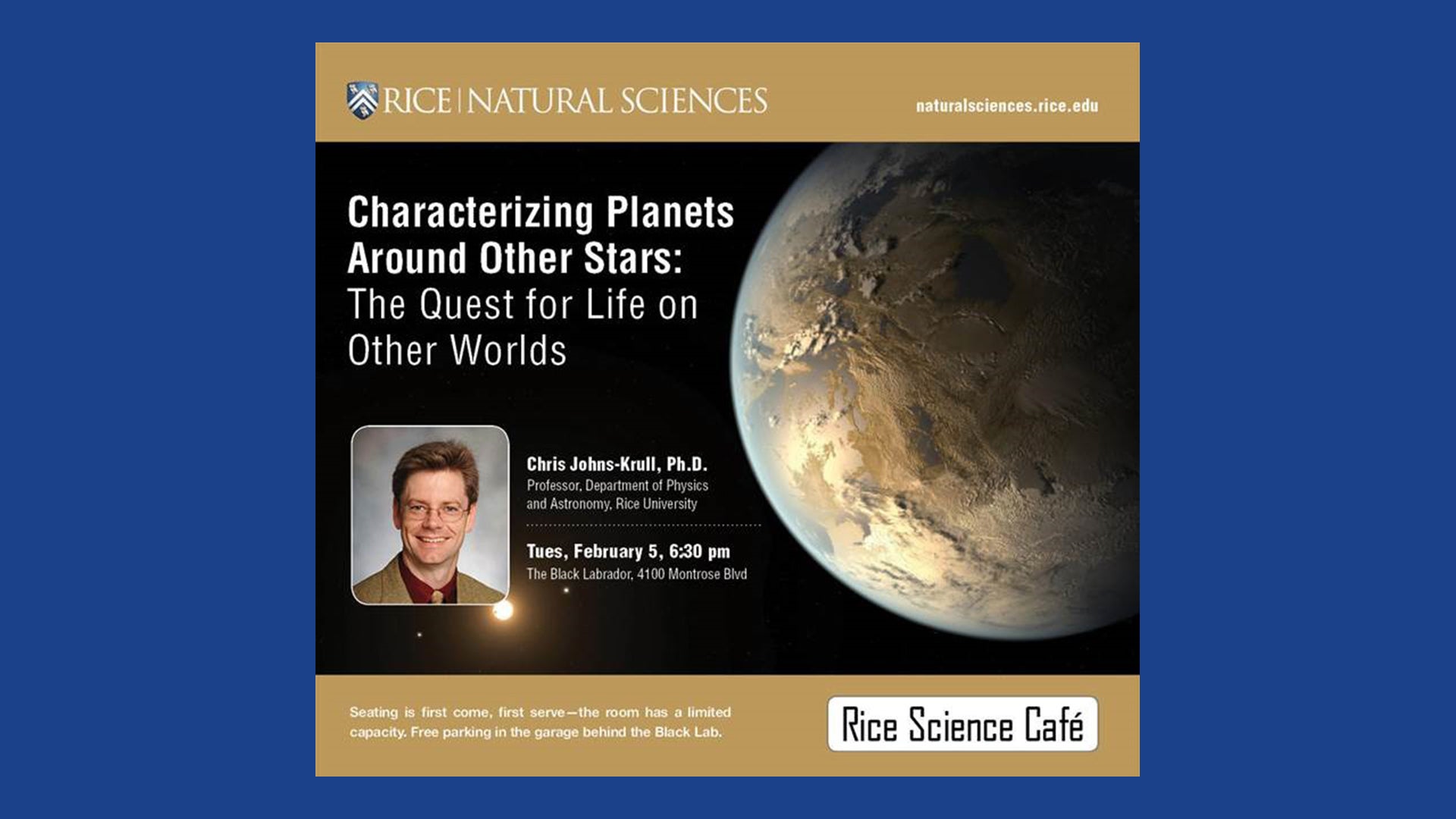Chris Johns-Krull, Ph.D.
Professor, Department of Physics and Astronomy
Tues, February 5, 6:30 pm
The Black Labrador, 4100 Montrose
Abstract: The first planets outside our solar system were discovered in 1995, and now about 3000 of these exoplanets have been discovered. The population of these known planets includes worlds smaller than the Earth up to worlds that are about 10 times the mass of Jupiter. Despite the large number of planets that have been found, significant questions remain as to how they form. Indeed, we still do not know the primary mechanism by which the largest planets (the most easy to detect) form. The vast majority of exoplanets have been found as a result of their effects on their parent stars. We are now starting to directly characterize the planets themselves, which allows us to better determine how planets form, and will eventually allow us to look for life on other worlds.
This talk will present very recent work on the characterization of a newly formed planet and will discuss our prospects for finding inhabited worlds in the next few years.
Rice Science Café: When Stars and Planets Are Born

